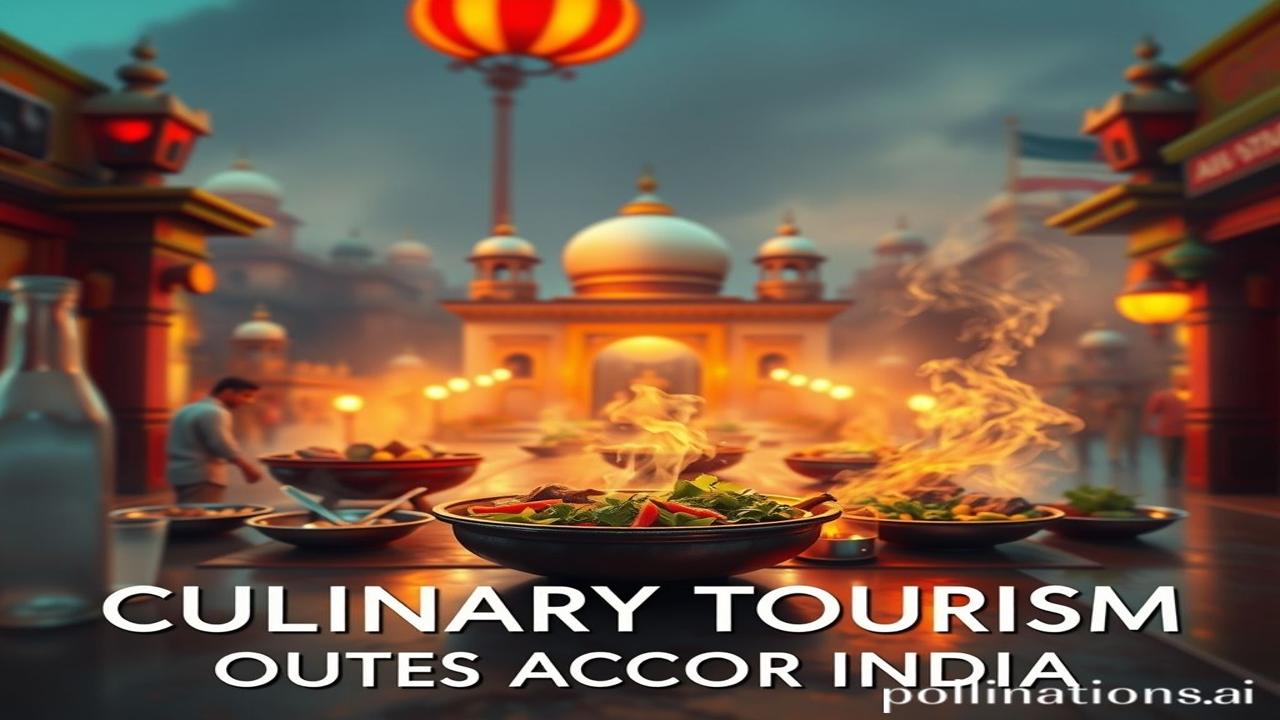India Ke Zaykon Ke Safar: Exploring Culinary Tourism Routes Across Bharat
Kabhi socha hai, jab hum Bharat ki dharti par chalte hain, toh kya sirf mitti ko chhoo rahe hote hain? Ya phir hamare pairon tale dabaa hai centuries ka taste, generations ki mehnat, aur desh ki soul ka ek gehra raaz? Let’s embark on a delectable journey through India’s culinary tourism routes, where every bite tells a story.
Culinary Tourism Routes: Kya Hai Yeh?
Culinary tourism, simple bhasha mein, is travel for food! It’s about exploring a destination through its cuisine. Not just fancy restaurants, but also street food stalls, local markets, farms, and the homes of people who keep the culinary traditions alive. India, with its insane diversity, offers a mind-blowing array of culinary experiences. Every state, every region, every community has something unique to offer. Think Rajasthani dal-baati-churma, Kashmiri rogan josh, or Tamil Nadu’s dosa-sambar – each a flavour bomb waiting to explode! Yeh koi nayi baat nahi hai; food has always been a crucial part of how we explore and understand a place.
The Spice Route: A Journey Through Time
Long before tourism became a buzzword, there was the Spice Route. Centuries ago, traders sailed across oceans in search of Indian spices, like elaichi (cardamom), kali mirch (black pepper), and dalchini (cinnamon). These spices were more valuable than gold! Imagine the hustle and bustle of Kochi’s spice markets, where traders from across the world would gather to haggle over prices. This route wasn’t just about trade; it was a cultural exchange, a fusion of flavours that shaped Indian cuisine and left its mark on the world.
Mughal Marvels: A Royal Feast
The Mughal era left an indelible mark on Indian cuisine. Think biryani, korma, kebabs, and naan – all delicacies that found their way into India through the Mughal rulers. Inke shaukh toh aise the ki inke bawarchi (cooks) bhi kalakar (artists) ki tarah izzat paate the. Food became an art form, a way to showcase power and wealth. Picture the royal kitchens of Delhi, filled with the aroma of spices and the sounds of clanging pots and pans, as chefs prepared elaborate feasts for the emperor and his court. The Mughal influence can still be tasted in restaurants across northern India, a reminder of a glorious past.
Zameeni Sach: Lok aur Jeevan
Imagine a farmer in Punjab, waking up before dawn to tend his fields of wheat. He knows that the quality of his harvest will determine the taste of the roti that his family eats. Or picture a fisherman in Goa, casting his nets into the Arabian Sea, hoping to catch enough fish to make a delicious fish curry for his community. Each ingredient has a story, a connection to the land and the people who cultivate it.
Ma Rukmini cooked pongal on a clay stove for the harvest festival, wearing her best silk sari. Her hands moved with practised ease, a skill passed down through generations of women. She added fresh jaggery and ghee, the aroma filling the air. Every grain of rice was a prayer, a gratitude for the bounty of the earth.
Dharohar aur Pehchan: Indianness in Every Bite
Today, culinary tourism is booming in India. People want to experience authentic flavours, to connect with the culture through food. We see this in the rise of food walks, cooking classes, and farm-to-table restaurants. The humble chai stall on the street corner is as much a part of our cultural identity as the grandest Mughal restaurant. It’s a reminder that good food is not just about the ingredients, but also about the experience, the company, and the memories it creates. Each dish is a reflection of Bharatiyata, a thread that connects us to our past and to each other.
Mazedar Tathy ya Bhram-Bhanjak: Fun Facts and Myth-Busters
-
Myth: Indian food is always spicy.
- Truth: While spices are an integral part of Indian cuisine, not every dish is fiery hot. There’s a wide range of flavours, from sweet to sour to savory, and many dishes use spices for aroma and flavour rather than just heat.
-
Fun Fact: The world’s oldest surviving cookbook, the Pakadarpana, was written in Sanskrit in India around the 12th century. It contains recipes for everything from meat dishes to desserts!
Drishya aur Bhavnayein: Visual and Sensory Layer
Imagine walking through a bustling street market in Varanasi. The air is thick with the smell of jalebi sizzling in hot oil, the sound of vendors hawking their wares, and the sight of vibrant colours everywhere you look. The temple bells chime in the distance, blending with the rhythmic chants of the priests. The temple walls are cool to the touch, worn smooth by centuries of prayer. It’s an experience that engages all your senses, leaving an unforgettable impression on your soul.
Antim Vichar ya Uddharan: Closing Insight or Quote
Food is more than just sustenance; it’s a connection to our roots, a celebration of our diversity, and a reminder of our shared humanity. Every dish tells a story, and every bite is a journey through time and culture. Let us savour each moment, cherish each flavour, and celebrate the rich culinary heritage of India.
“Annam Brahma,” – Food is God. Let’s treat it with reverence and gratitude.
